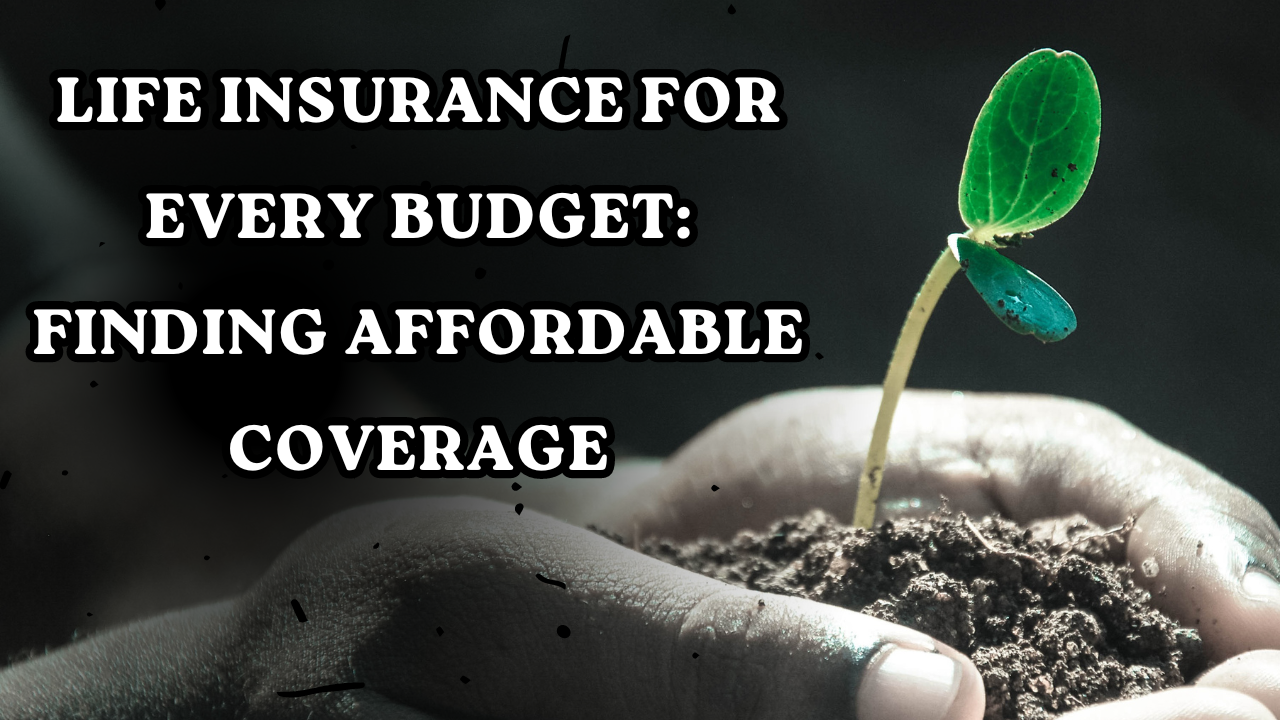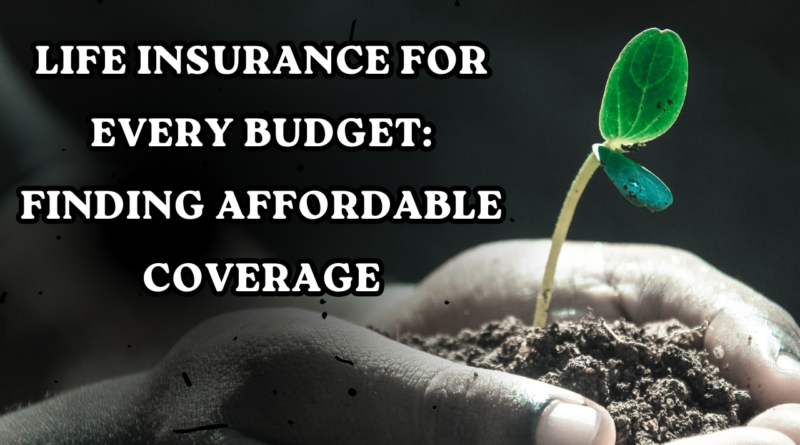Life Insurance for Every Budget: Finding Affordable Coverage
Finding affordable life insurance can be easier than you might think. Start by assessing your needs, then shop around for quotes from different providers. Consider term life insurance for more budget-friendly options, and don’t hesitate to ask about discounts or ways to lower your premiums. Remember, it’s important to balance affordability with adequate coverage to protect your loved ones.
What Factors Influence the Cost of Life Insurance
Several factors can influence the cost of life insurance:
- Age and Health: Younger, healthier individuals typically pay lower premiums because they’re considered lower risk.
- Coverage Amount: The more coverage you need, the higher your premiums will be.
- Policy Type: Term life insurance is generally cheaper than permanent life insurance.
- Smoking Status: Smokers often pay higher premiums due to increased health risks.
- Occupation and Hobbies: Riskier jobs or hobbies can lead to higher premiums.
- Gender: Historically, women have lower premiums due to longer life expectancies.
- Medical History: Pre-existing conditions can increase premiums.
- Family History: A family history of certain illnesses might affect your rates.
- Location: Cost of living and local mortality rates can impact premiums.
- Insurance Company: Each insurer has its own underwriting criteria and pricing models.
What Types of Life Insurance Policies Offer Affordable Coverage?
Term life insurance typically offers the most affordable coverage. It provides coverage for a specific period (e.g., 10, 20, or 30 years) and pays out a death benefit if the insured passes away during that term. Since it doesn’t include cash value or investment components, term life insurance tends to have lower premiums compared to permanent life insurance policies like whole life or universal life. However, it’s essential to consider your individual needs and financial goals when choosing a life insurance policy.
How Much Life Insurance Coverage Do I Need to Protect My Family?
Determining the right amount of life insurance coverage depends on various factors, including:
- Income Replacement: Consider how much income your family would need to maintain their standard of living if you were to pass away. A common rule of thumb is to aim for coverage that replaces 5 to 10 times your annual income.
- Debts and Expenses: Factor in outstanding debts like mortgages, car loans, and credit card debt, as well as future expenses like college tuition for children.
- Final Expenses: Include funeral costs, medical bills, and other end-of-life expenses.
- Future Needs: Think about future financial goals such as retirement savings, emergency funds, and healthcare costs.
- Existing Savings and Investments: Subtract any existing savings, investments, and other life insurance policies from the total coverage needed.
- Inflation: Consider the impact of inflation on future expenses when determining coverage amounts.
It’s essential to review your coverage needs periodically, especially after significant life events such as marriage, the birth of a child, or a change in income. Consulting with a financial advisor can also help ensure you choose the right amount of coverage for your family’s needs.
Can I Get Affordable Life Insurance if I Have Pre-existing Health Conditions?
Yes, it’s still possible to get life insurance with pre-existing health conditions, although the premiums may be higher compared to someone in good health. Here are some options:
- Guaranteed Issue Life Insurance: These policies don’t require a medical exam or health questionnaire, making them accessible to individuals with pre-existing conditions. However, they often have lower coverage limits and higher premiums.
- Simplified Issue Life Insurance: These policies typically don’t require a medical exam but may ask health-related questions. They can be more affordable than guaranteed issue policies but may still have higher premiums compared to standard policies.
- Traditional Life Insurance with Underwriting: Some insurers specialize in underwriting policies for individuals with pre-existing conditions. While the premiums may be higher, it’s still worth shopping around and comparing quotes from different insurers to find the most affordable option.
- Group Life Insurance: If available through your employer or another group, you may be able to obtain coverage without undergoing a medical exam or answering health questions. However, coverage amounts may be limited.
It’s essential to disclose all relevant health information accurately when applying for life insurance to ensure you get the appropriate coverage. Working with an experienced insurance agent or broker can also help you navigate the process and find the best policy for your needs.
What Are the Benefits of Term Life Insurance for Budget-Conscious Individuals?
Term life insurance is an excellent option for budget-conscious individuals because it offers several benefits:
- Affordability: Term life insurance typically has lower premiums compared to permanent life insurance policies like whole life or universal life. This makes it more accessible for individuals on a tight budget.
- Fixed Premiums: With term life insurance, your premiums remain the same throughout the term of the policy, providing predictable costs that are easier to budget for.
- Flexible Coverage: Term life insurance allows you to choose the coverage amount and term length that align with your needs and budget. You can select a policy that provides enough coverage for your dependents without paying for unnecessary extras.
- Simple Coverage: Term life insurance is straightforward and provides pure death benefit protection without cash value or investment components, keeping costs down.
- Temporary Needs: Term life insurance is ideal for covering temporary needs such as income replacement during your working years, paying off a mortgage or other debts, or funding your children’s education.
- Convertible Options: Many term life insurance policies offer the option to convert to a permanent policy later on if your needs change, providing flexibility for the future without committing to higher premiums upfront.
Overall, term life insurance offers cost-effective protection for individuals who want to ensure their loved ones are financially secure in the event of their passing without breaking the bank.
Are There Discounts or Ways to Save Money on Life Insurance Premiums?
Yes, there are several ways to potentially save money on life insurance premiums:
- Healthy Lifestyle Discounts: Some insurers offer discounts for healthy behaviors such as non-smoking, maintaining a healthy weight, or participating in regular exercise programs.
- Annual Premium Payments: Paying your premiums annually instead of monthly can sometimes result in savings, as insurers may offer discounts for annual payments.
- Group Coverage: Group life insurance policies offered through employers or professional associations often provide coverage at lower rates compared to individual policies purchased on the open market.
- Multi-Policy Discounts: Bundling your life insurance policy with other types of insurance, such as auto or homeowners insurance, with the same insurer can often result in discounts on premiums.
- Age-Specific Discounts: Some insurers offer discounts for purchasing life insurance at a younger age, as premiums are typically lower for younger individuals.
- Good Health Discounts: Demonstrating good health through medical exams or health screenings can sometimes result in lower premiums.
- Loyalty Discounts: Remaining with the same insurance company for an extended period may result in loyalty discounts or other perks.
- Online Discounts: Some insurers offer discounts for purchasing life insurance online or through their website.
It’s essential to shop around and compare quotes from multiple insurers to ensure you’re getting the best coverage at the most competitive rates. Additionally, working with an experienced insurance agent or broker can help you navigate the process and uncover additional opportunities for savings.
How Can I Compare Quotes to Find the Most Affordable Life Insurance Policy?
To compare quotes and find the most affordable life insurance policy, follow these steps:
- Determine Your Needs: Assess your coverage needs, including the amount of coverage and the length of the term that best suits your situation.
- Gather Information: Collect relevant personal and health information, including age, gender, tobacco use, medical history, and any other factors that may affect your premiums.
- Get Multiple Quotes: Request quotes from multiple insurers or use online comparison tools to obtain quotes from several companies. Be sure to compare similar coverage amounts and terms for an accurate comparison.
- Review Coverage Options: Evaluate the features and benefits of each policy, including any riders or additional coverage options that may be available.
- Consider Premiums and Payment Options: Compare the premiums quoted for each policy, as well as any discounts or savings opportunities offered by the insurer. Also, consider the payment options available, such as monthly, quarterly, or annual premiums.
- Check Financial Ratings: Research the financial strength and stability of each insurer by checking their financial ratings from independent rating agencies like A.M. Best, Moody’s, or Standard & Poor’s.
- Read Reviews and Testimonials: Look for reviews and testimonials from current policyholders to gauge customer satisfaction and service quality.
- Consult with an Expert: Consider consulting with an experienced insurance agent or broker who can help you navigate the process, explain policy details, and provide personalized recommendations based on your needs and budget.
By following these steps and carefully comparing quotes from multiple insurers, you can find the most affordable life insurance policy that meets your coverage needs and financial goals.

